Dry Fly Fishing for Barbel: The European Bonefish
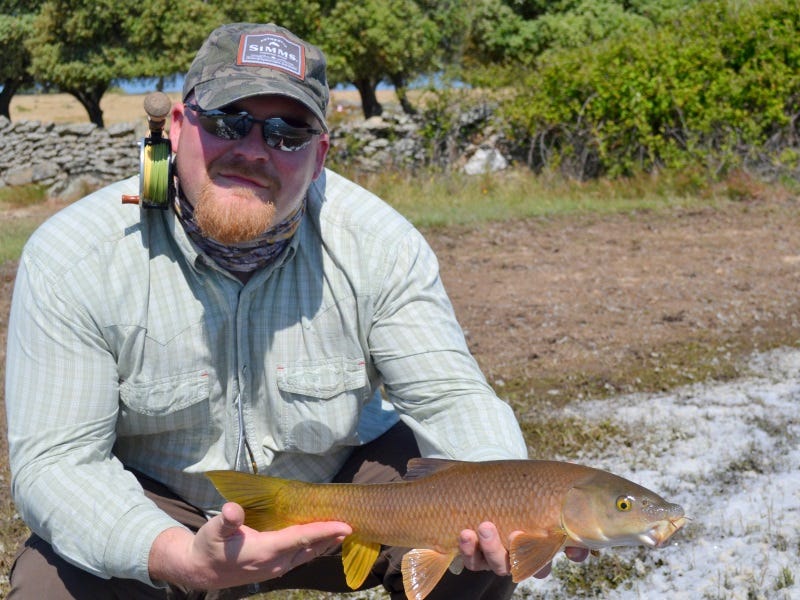
By John D. Malison
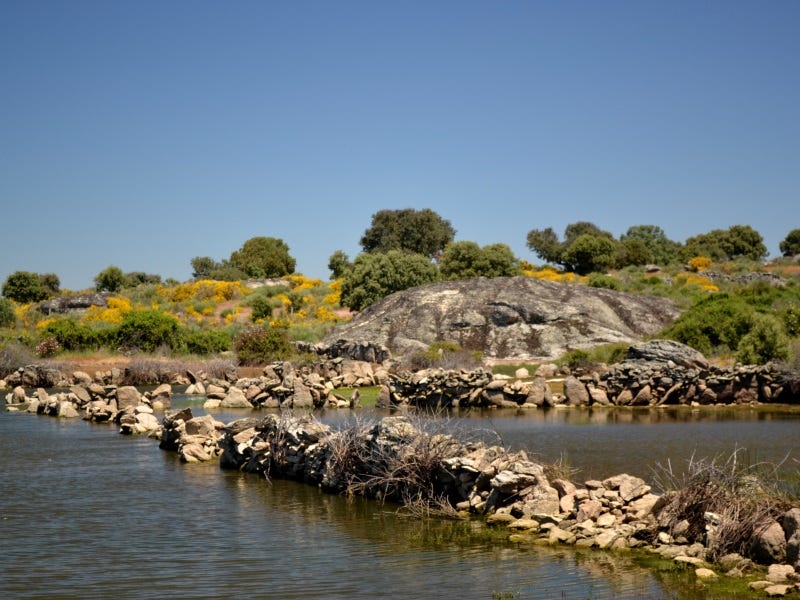 "Twelve meters, and lay it half a meter in front of the fish", Luis said. Those words were uttered to me by my guide when we were still thirty feet from the lake.
"Twelve meters, and lay it half a meter in front of the fish", Luis said. Those words were uttered to me by my guide when we were still thirty feet from the lake.
I was frantically looking out into the open water for the fish, so that I would not screw up my first shot at what Luis referred to as a European Bonefish.
I was still searching the open water when he finally pointed to a fish swimming not three feet from the shore.
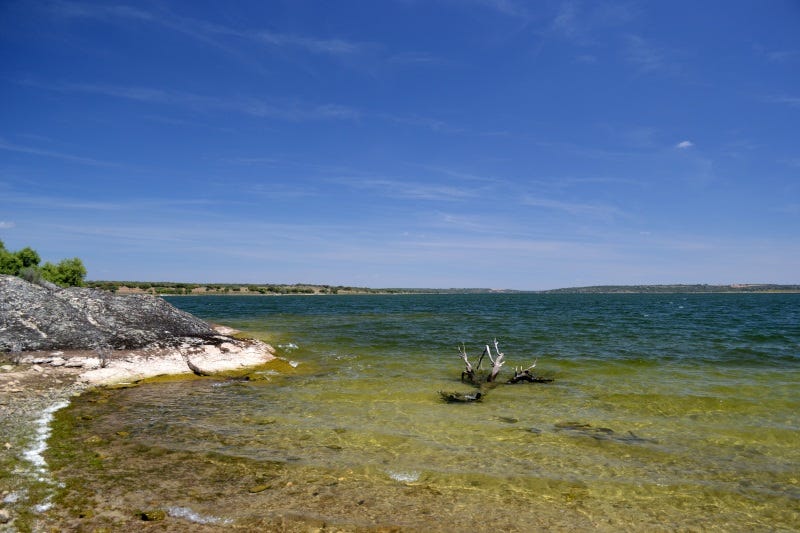
How To Cast To Barbel From The Shore
I have casted a lot in my life, but I have never been asked to lay down most of my fly line on dry land, and to only have three feet of tippet on the water. I put the cast down softly, and the fish did not even give it a look.
Luis was quick to reprimand me, "You put it down too softly. Next time make it plop."
I did not have long to wait, as another fish positioned itself close to the same spot. This time, I put the cast on the ground, and made sure it landed solid. Results did not take long, a quick flip of the fish’s tail, a sip, and I was tight. What followed was a long screaming run that I did not think a fish of that size could muster.
I was near the Spain/Portugal border getting my first taste of Barbel. Spain has some unbelievable rivers and lakes, but it doesn’t show up on many destinations for fisherman. It has been a place that I wanted to fish, and as luck would have it, my wife had to attend a conference in this area. Of course I opted to tag along on this trip to Spain.
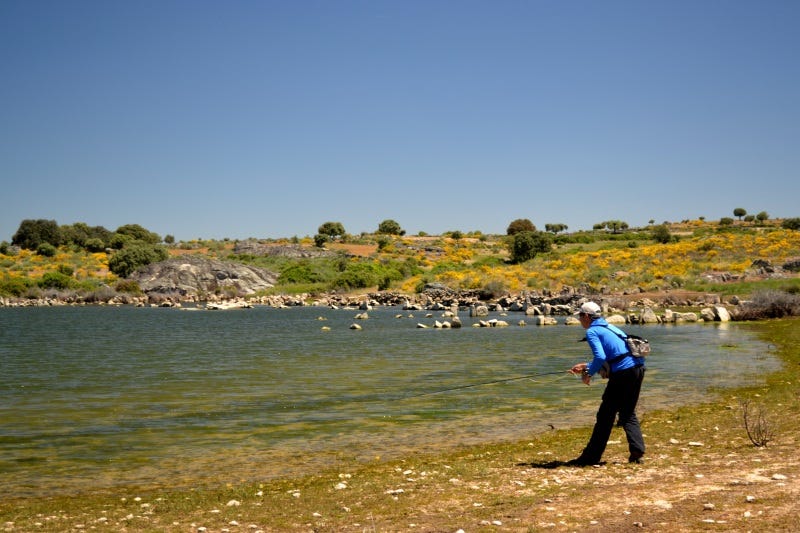
Searching Spanish Waters for a New "Bonefish"
While she attended meetings, I was free to check out some of the waters in the country. A friend of mine recommended a guide, and he happened to have a few days available while I was in town.
A plane ride and a train ride brought me to Madrid, where Luis Meana picked me up. Luis was an engineer and die hard fly fisherman who turned to guiding when the Spanish economy took a nose dive.
I think I got lucky landing that first fish, because I quickly found out that there was a lot to learn about Barbel fishing. Instead of opting for open water, Barbel hold tight to shore lines, they cruise, tail, and get right up on the shores.
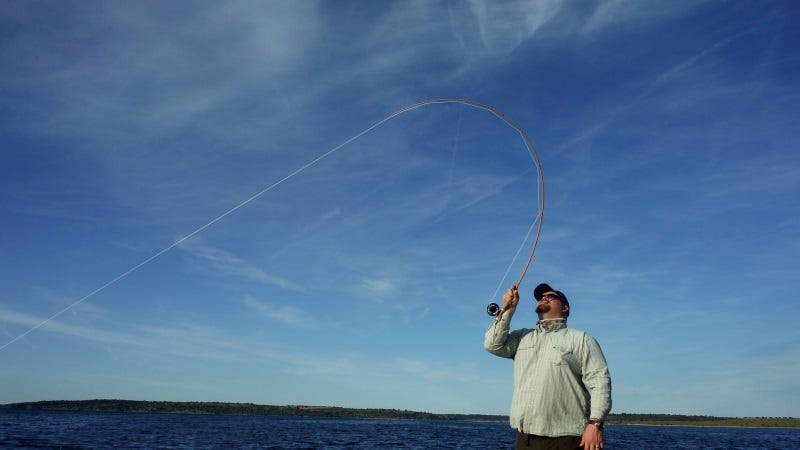
What Is a Barbel?
Barbel can best be defined as a freshwater version of bonefish, mimicking many of their characteristics of being a spooky and hard fighting fish. There is one great exception to this. They readily take dry flies.
It didn’t take me long to realize that I had to limit casts, be precise, and make sure I plopped the fly on the water. With a quick lesson from Luis, the fun was on.
We spent the day walking the banks and spotting fish. Many casts were laid down on the ground, so that just the tip of the leader was in the water.

What These Fish Were Eating
While Barbel can be very picky, it wasn’t one of those days. They were readily taking the large foam ants that I was putting down. Barbel are not structure oriented, and if you can keep the hook in them, and make it through the two to three long runs, they are normally brought to hand.
While conditions normally diminish during the day due to glare and wind, our luck held, and we stayed into fish until right before dark. Even as we left the shoreline, we could still see the occasional back or tail slipping along the banks, giving me one last look at the fish that were still out there just waiting to have one big foam fly plopped down in front of them.
